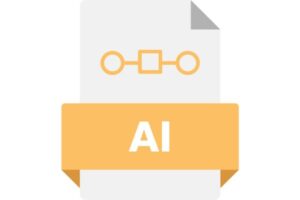In today’s digital era, blogging has become an increasingly popular medium for individuals and businesses to share their ideas, expertise, and stories with a global audience. Among the various blogging platforms available, WordPress stands out as one of the most versatile and user-friendly options. Whether you’re a seasoned blogger or a beginner looking to start your own blog, this comprehensive guide will walk you through the step-by-step process of setting up a WordPress blog. From choosing a domain name to customizing your site’s design, you’ll gain the knowledge and confidence to create a professional and engaging blog.
Selecting a Domain and Hosting Provider
The first step in setting up your WordPress blog is selecting a domain name and a reliable hosting provider. Your domain name is the web address that visitors will use to access your blog, so it’s essential to choose a name that reflects your brand or content. Consider using a domain name registrar to search for available options and secure your chosen domain. Next, you’ll need to select a hosting provider that offers WordPress-compatible hosting. Look for providers that offer reliable server uptime, good customer support, and one-click WordPress installation. Once you’ve chosen a domain and hosting provider, you can proceed to the next steps of setting up your WordPress blog.
Installing WordPress
Installing WordPress is a straightforward process that can be done with just a few clicks. Many hosting providers offer one-click WordPress installation, making it incredibly convenient for beginners. Simply log in to your hosting account’s control panel, navigate to the WordPress installation section, and follow the prompts to install WordPress on your domain. If your hosting provider does not offer one-click installation, you can manually download the WordPress software from the official website and upload it to your hosting server using an FTP client. Once the installation is complete, you’ll have access to the WordPress dashboard, where you can begin customizing your blog.
Customizing Your Blog’s Appearance
One of the advantages of WordPress is its vast library of themes and customization options. To give your blog a unique and visually appealing look, you can choose from thousands of free and premium WordPress themes. Browse through the theme directory or explore third-party theme marketplaces to find a design that aligns with your blog’s topic and personal style. Once you’ve selected a theme, you can easily customize its colors, fonts, layout, and other elements using the WordPress Customizer or a theme-specific settings panel. Additionally, you can further personalize your blog by adding a logo, header image, and custom menus. Take the time to experiment with different options and create a visually engaging blog that resonates with your audience.
Essential Plugins for Functionality and Optimization
WordPress plugins are like apps that extend the functionality of your blog. They allow you to add features, enhance performance, and optimize your site for search engines. While there are thousands of plugins available, it’s essential to choose those that are necessary for your specific needs. Some essential plugins to consider include a security plugin to protect your blog from hackers, an SEO plugin to optimize your content for search engines, a caching plugin to improve site speed, and a backup plugin to safeguard your data. Additionally, consider plugins for social media integration, contact forms, and analytics tracking. Remember to install only reputable plugins from trusted sources and regularly update them to ensure compatibility and security.
Creating Compelling Content
Content is the heart and soul of any successful blog. To engage your audience and attract readers, it’s crucial to create high-quality, informative, and engaging content. Start by defining your blog’s niche and target audience. This will help you tailor your content to their interests and needs. Plan your blog posts in advance, considering topics that are relevant and timely. Use a mix of text, images, and multimedia elements to make your content visually appealing and engaging. Write compelling headlines that grab attention and incorporate relevant keywords to improve your blog’s visibility in search engine results. Be consistent in your posting schedule to establish a regular readership and engage with your audience through comments and social media. By focusing on creating valuable content, you’ll build a loyal following and establish yourself as an authority in your niche.
Optimizing Your Blog for Search Engines
Search engine optimization (SEO) is crucial for driving organic traffic to your blog. By optimizing your content and site structure, you can improve your visibility in search engine results and attract more readers. Start by conducting keyword research to identify the terms and phrases your target audience is searching for. Incorporate these keywords naturally throughout your content, including in headings, titles, and meta descriptions. Use descriptive URLs and alt tags for images to provide additional context for search engines. Optimize your blog’s loading speed by optimizing images, using caching plugins, and choosing a reliable hosting provider. Additionally, ensure your blog is mobile-friendly, as mobile optimization is an important ranking factor for search engines. Regularly monitor your blog’s performance using analytics tools and make adjustments to your SEO strategy as needed.
Engaging with Your Audience
Building a community around your blog is key to its success. Engaging with your audience helps foster loyalty, encourages discussion, and keeps readers coming back for more. Respond to comments on your blog posts, engage in conversations on social media, and encourage readers to share their thoughts and feedback. Consider adding social sharing buttons to your blog posts to make it easy for readers to share your content with their networks. Additionally, consider incorporating interactive elements such as quizzes, polls, or surveys to encourage audience participation. By actively engaging with your audience, you’ll create a sense of connection and build a loyal community around your blog.
Monetizing Your Blog
If you’re looking to monetize your blog, there are several strategies you can consider. One popular method is display advertising, where you allow ad networks to place ads on your blog in exchange for revenue. Google AdSense is a widely used ad network that matches relevant ads to your content and pays you based on clicks or impressions. Another option is affiliate marketing, where you promote products or services and earn a commission for each sale or lead generated through your referral. Joining affiliate networks such as Amazon Associates or Commission Junction allows you to access a wide range of affiliate programs. You can also create and sell digital products, such as e-books, courses, or templates, directly from your blog. Lastly, sponsored content and partnerships with brands can be a lucrative way to monetize your blog. Be transparent with your audience about sponsored content and ensure that any partnerships align with your blog’s values and audience interests.
Growing Your Blog’s Reach
Once your blog is up and running, it’s time to focus on growing your reach and attracting more readers. There are several strategies you can employ to increase your blog’s visibility and reach a wider audience. Guest blogging on other relevant blogs allows you to tap into their established audience and gain exposure for your blog. Participate in online communities, forums, and social media groups related to your blog’s niche to share your expertise and connect with like-minded individuals. Collaborate with other bloggers or influencers by co-creating content or hosting joint webinars or events. Consider utilizing email marketing to build a subscriber list and regularly send out newsletters with your latest blog posts or exclusive content. Lastly, leverage the power of social media by sharing your blog posts, engaging with your audience, and utilizing relevant hashtags and trends to reach a broader audience.
Analyzing and Improving Your Blog’s Performance
Regularly analyzing your blog’s performance is essential to understanding what’s working and what needs improvement. Utilize analytics tools, such as Google Analytics, to track metrics like page views, bounce rate, and conversion rates. Analyze which blog posts are performing well and generating the most engagement, and identify any trends or patterns. Use this data to inform your content strategy and focus on creating more of what resonates with your audience. Additionally, regularly review your blog’s design, navigation, and user experience to ensure a seamless and enjoyable browsing experience for your readers. Continuously iterate and experiment with different strategies to optimize your blog’s performance and drive growth.
Conclusion
Setting up a WordPress blog may seem like a daunting task, but with the right guidance and a step-by-step approach, it becomes an achievable goal. By selecting a domain and hosting provider, installing WordPress, customizing your blog’s appearance, installing essential plugins, creating compelling content, optimizing for search engines, engaging with your audience, monetizing your blog, growing your blog’s reach, and analyzing and improving its performance, you’ll be well on your way to establishing a successful and impactful blog. Remember, blogging is a journey of learning and growth, so don’t be afraid to experiment, adapt, and embrace new opportunities. Happy blogging!



